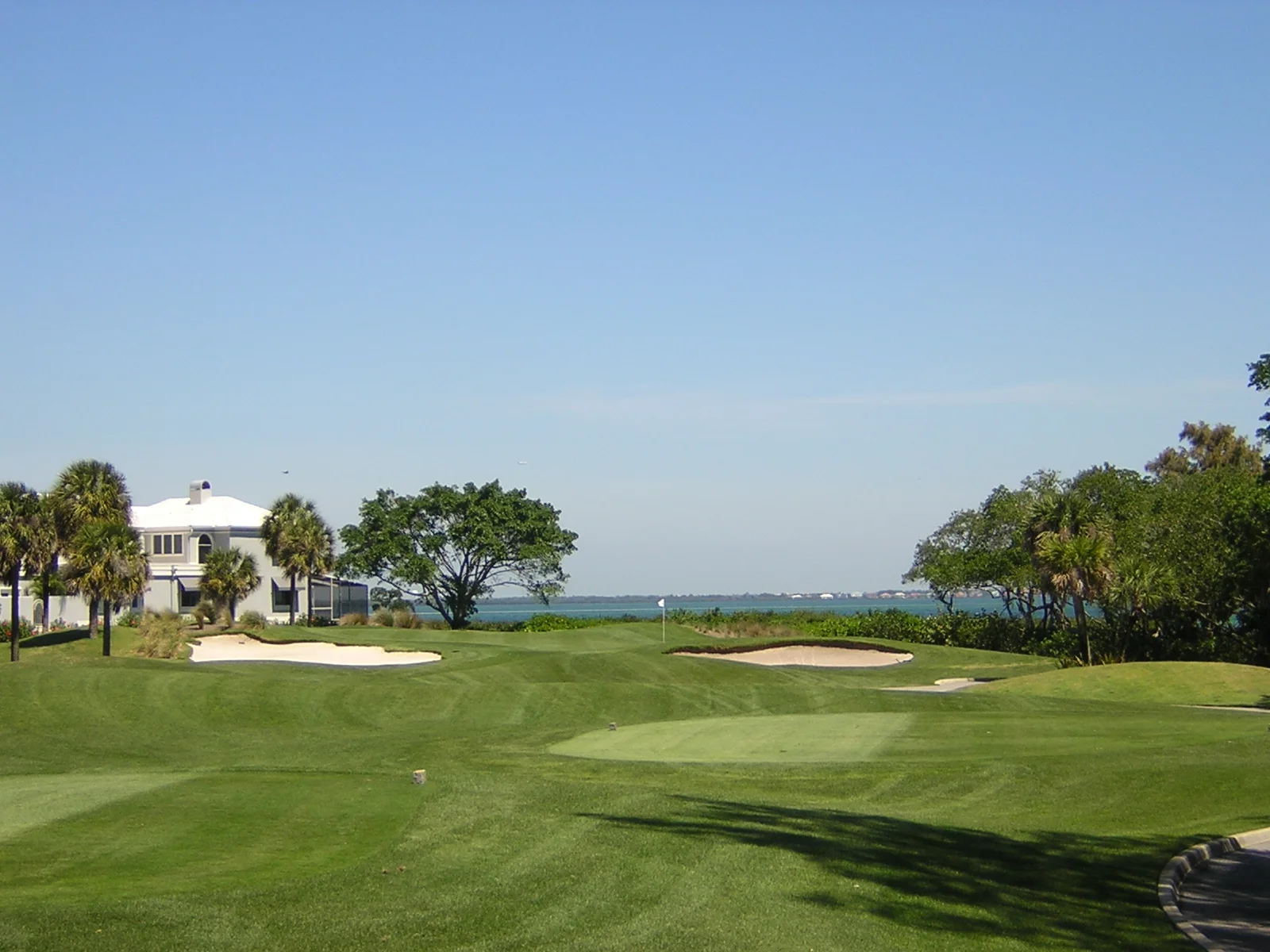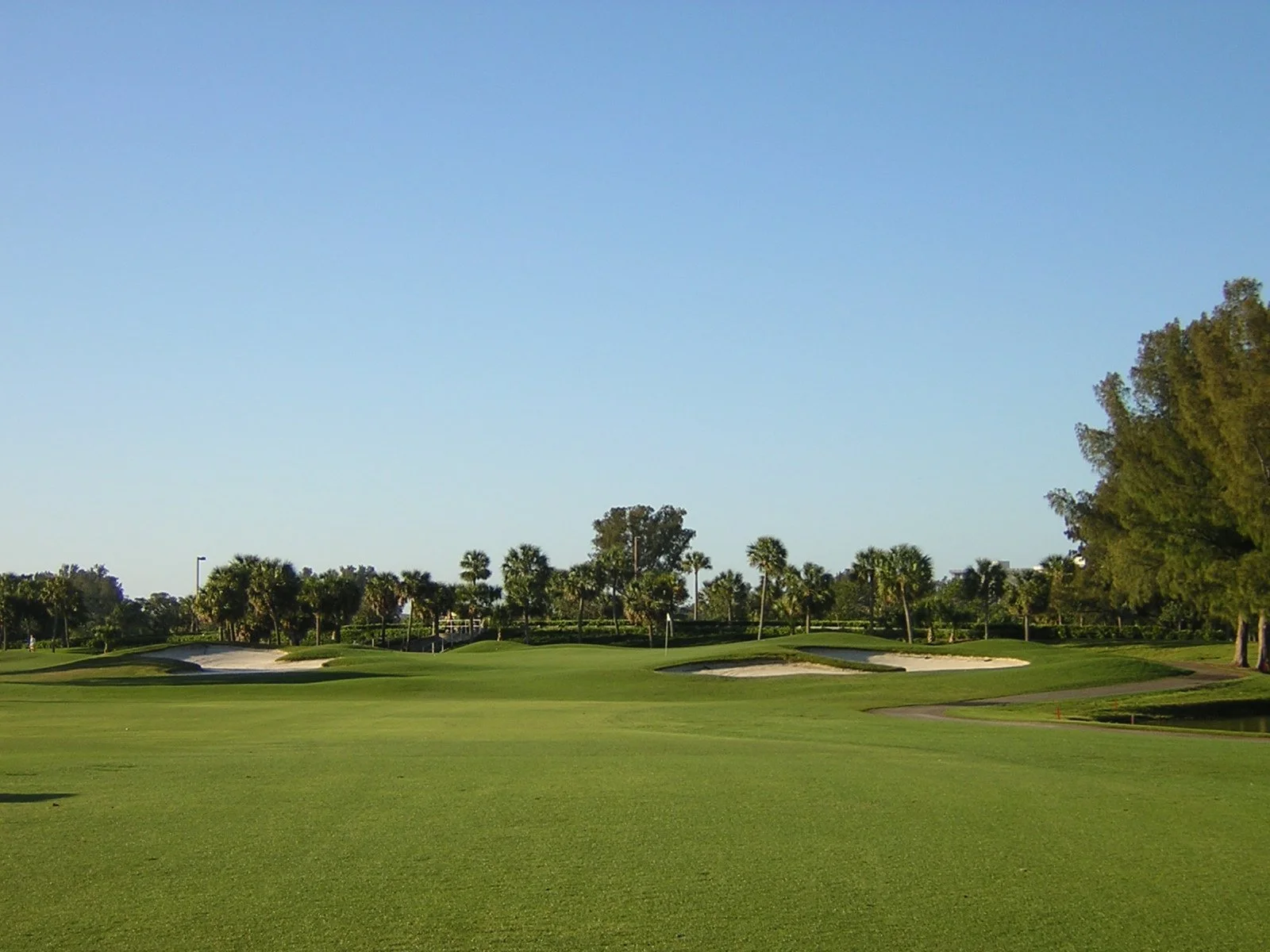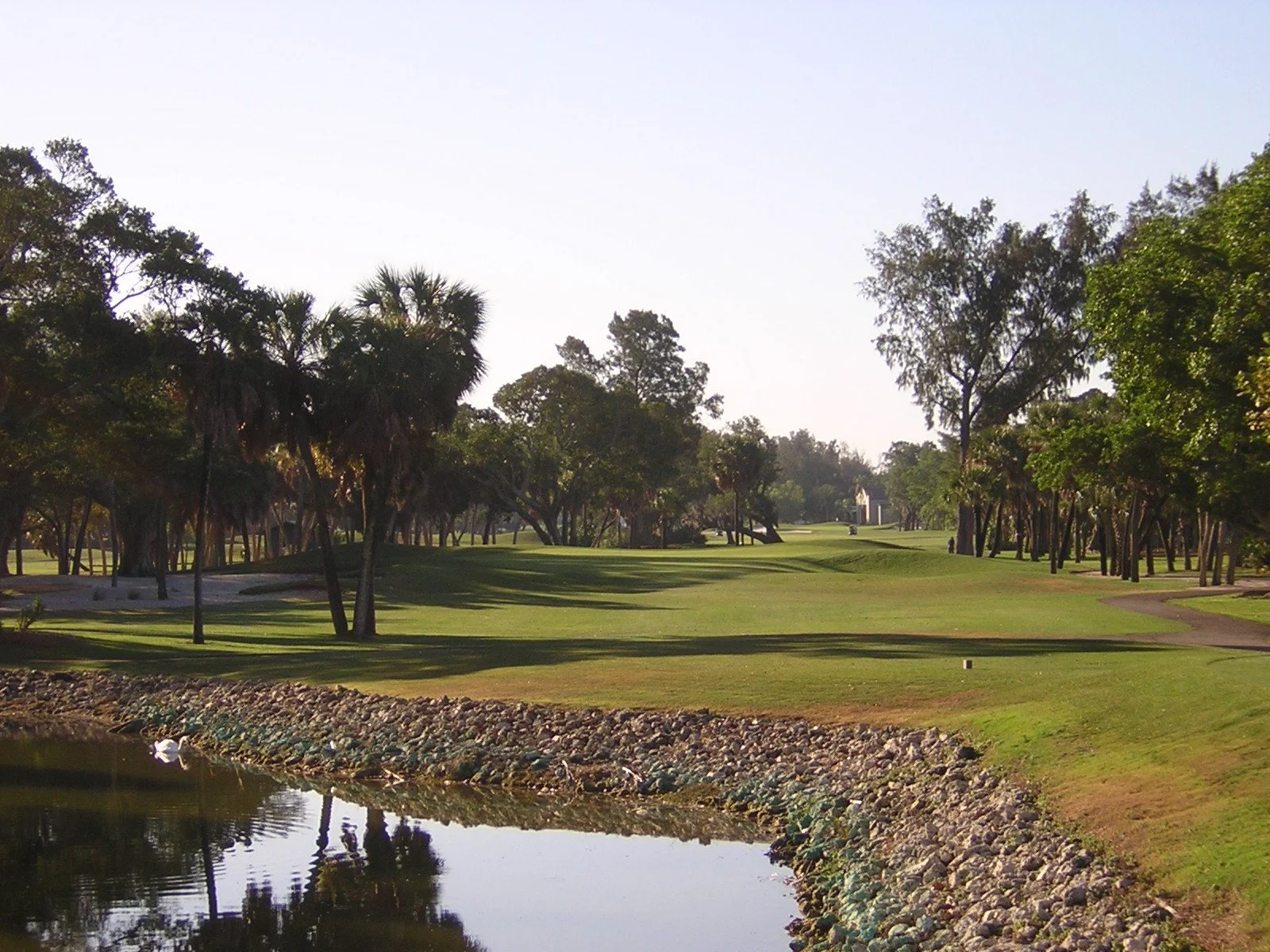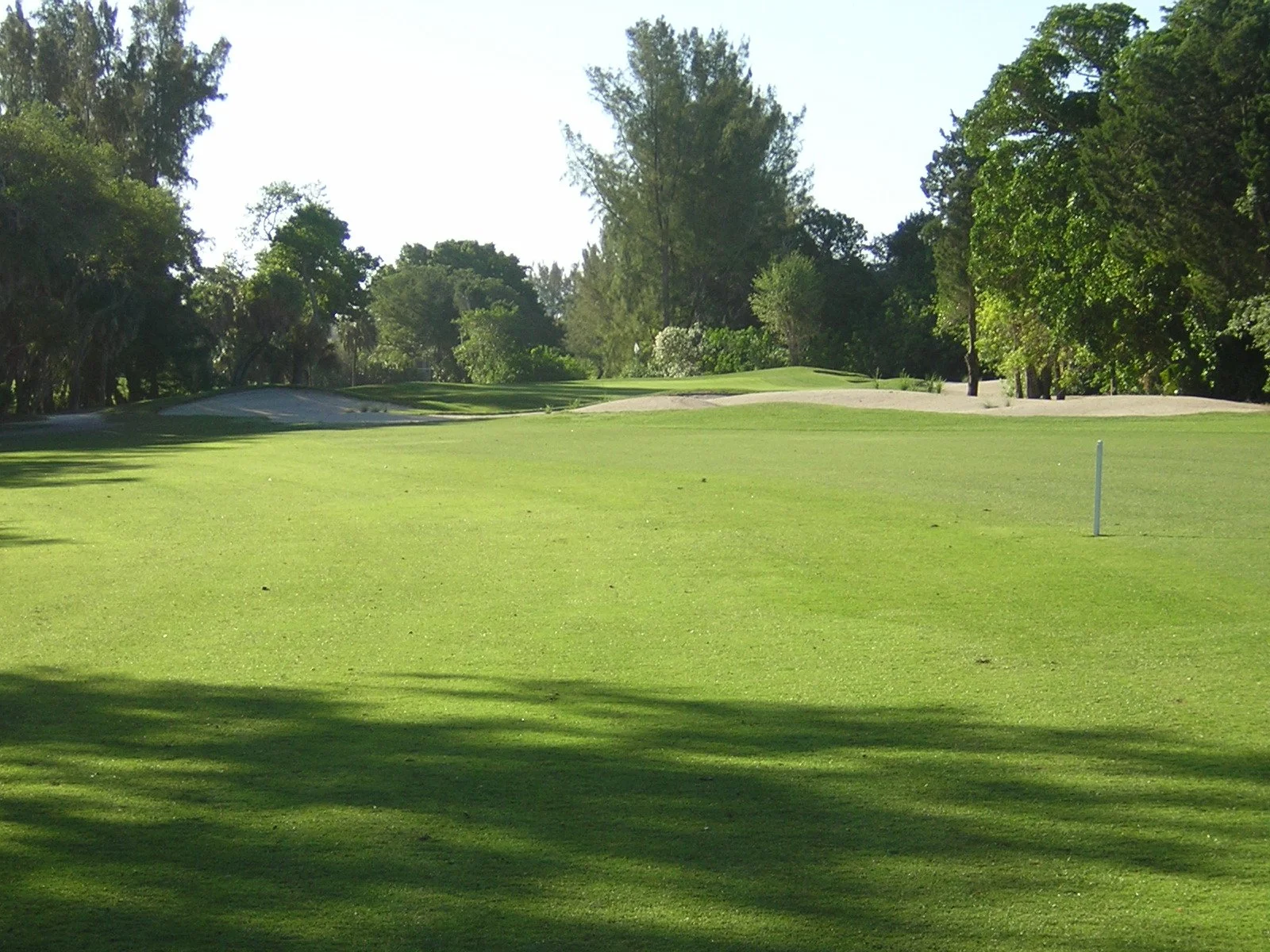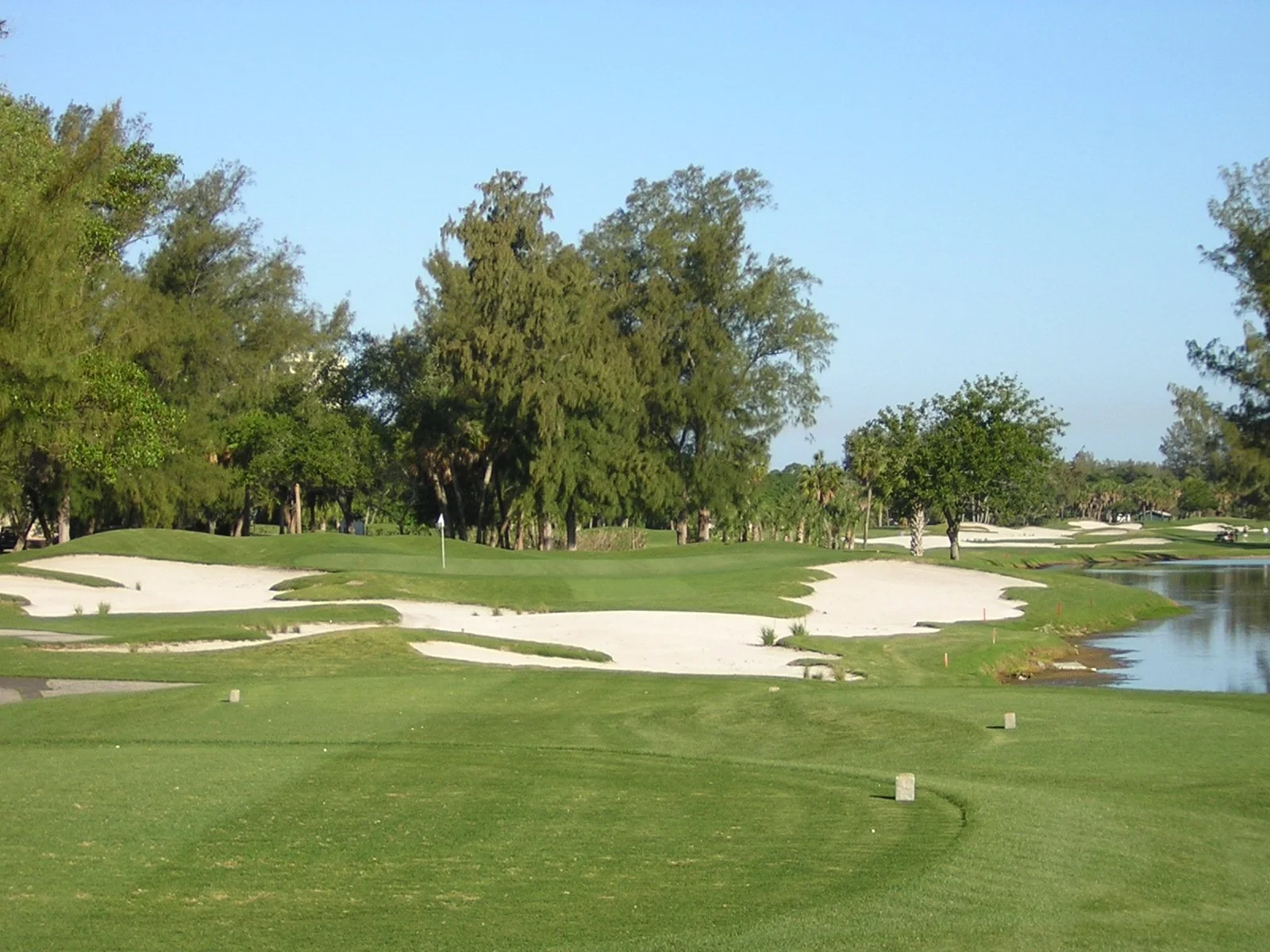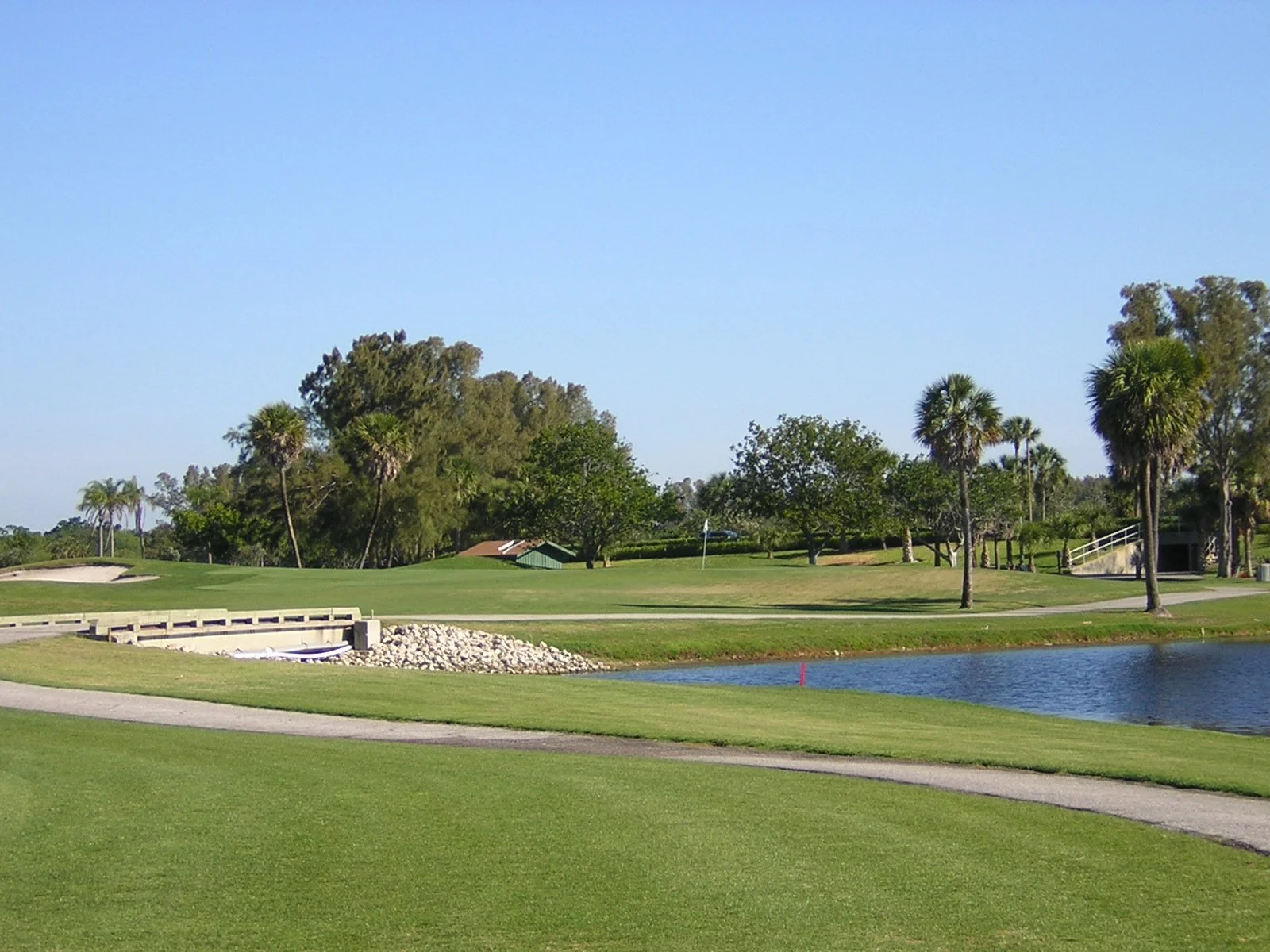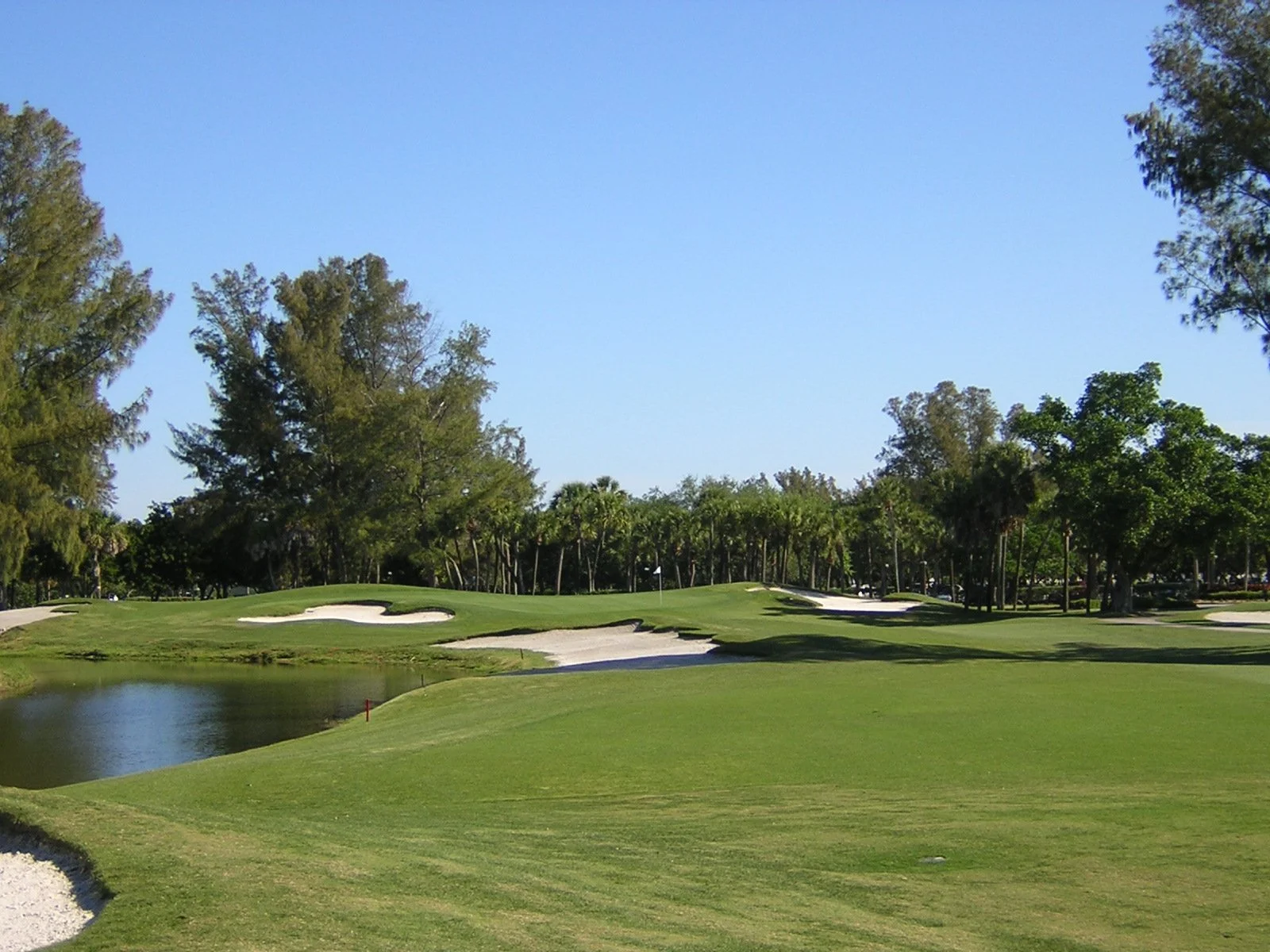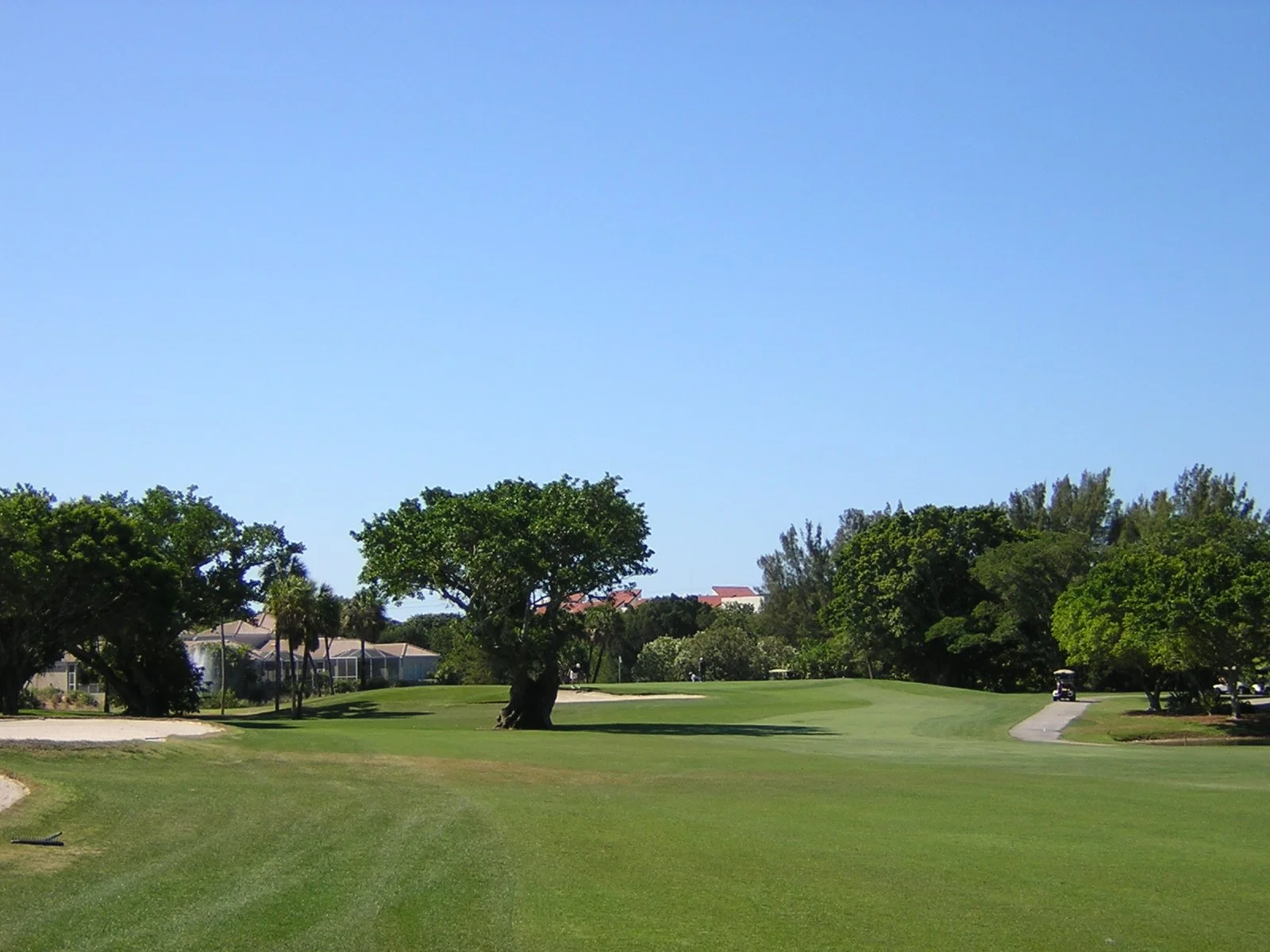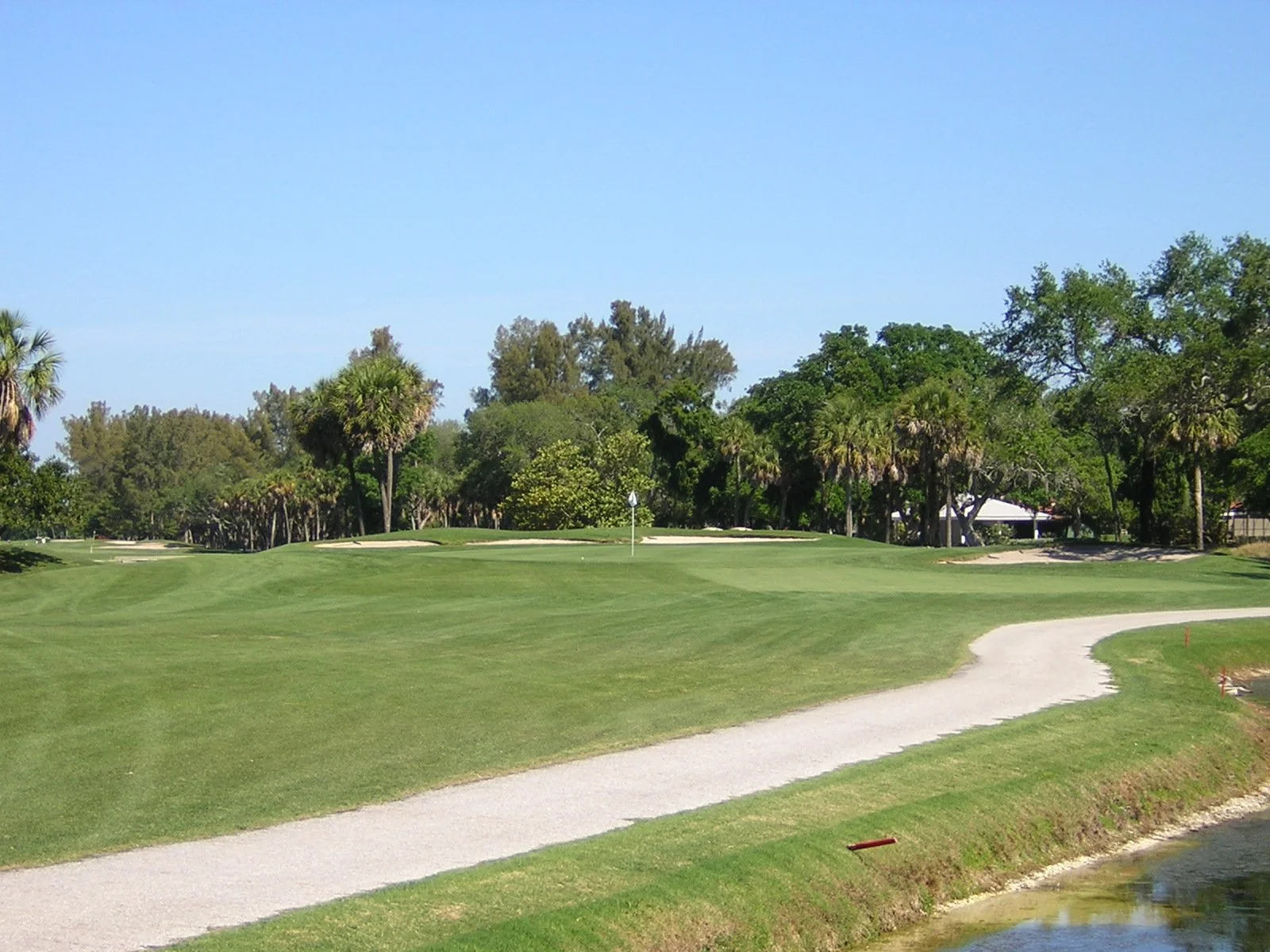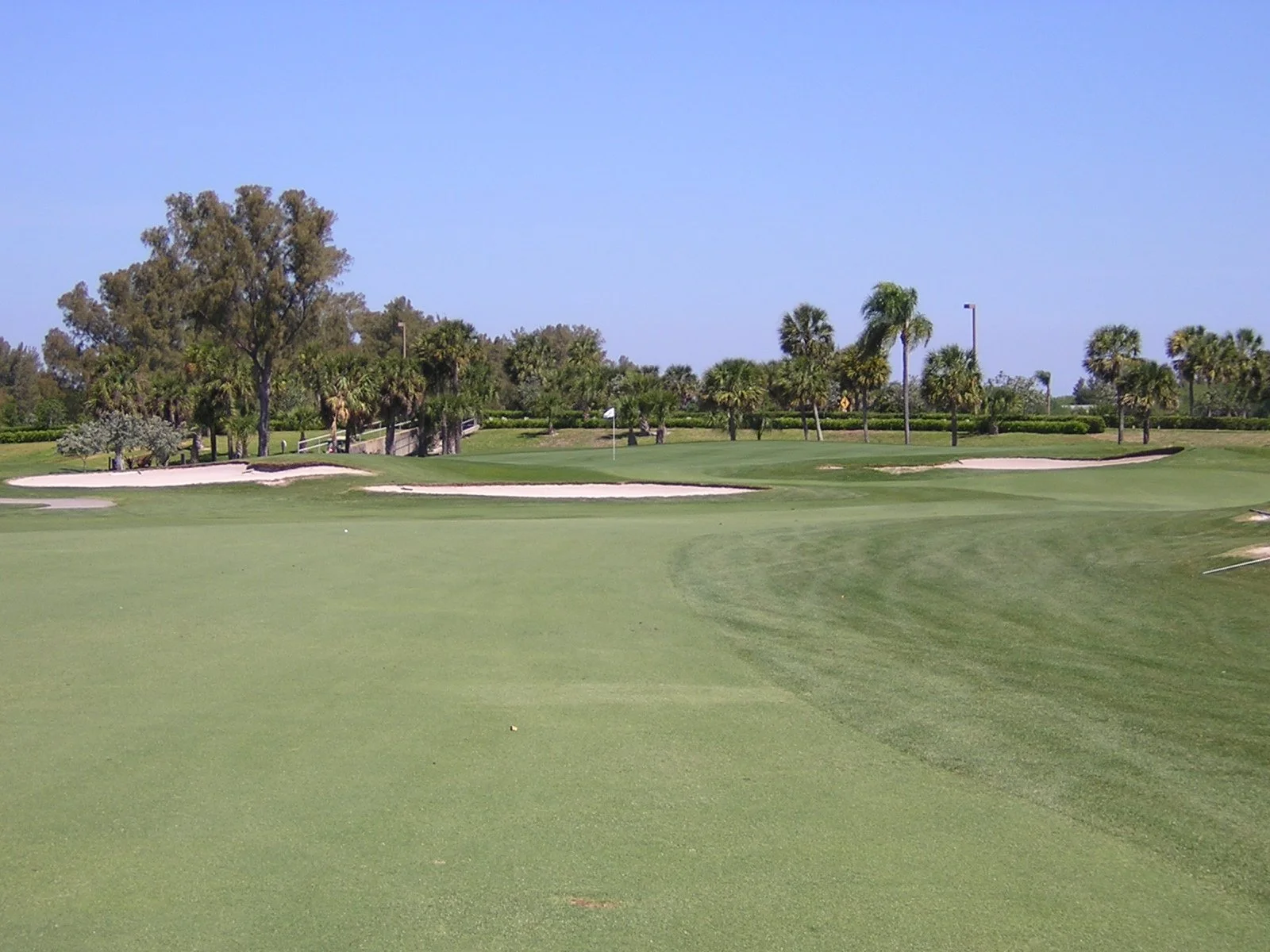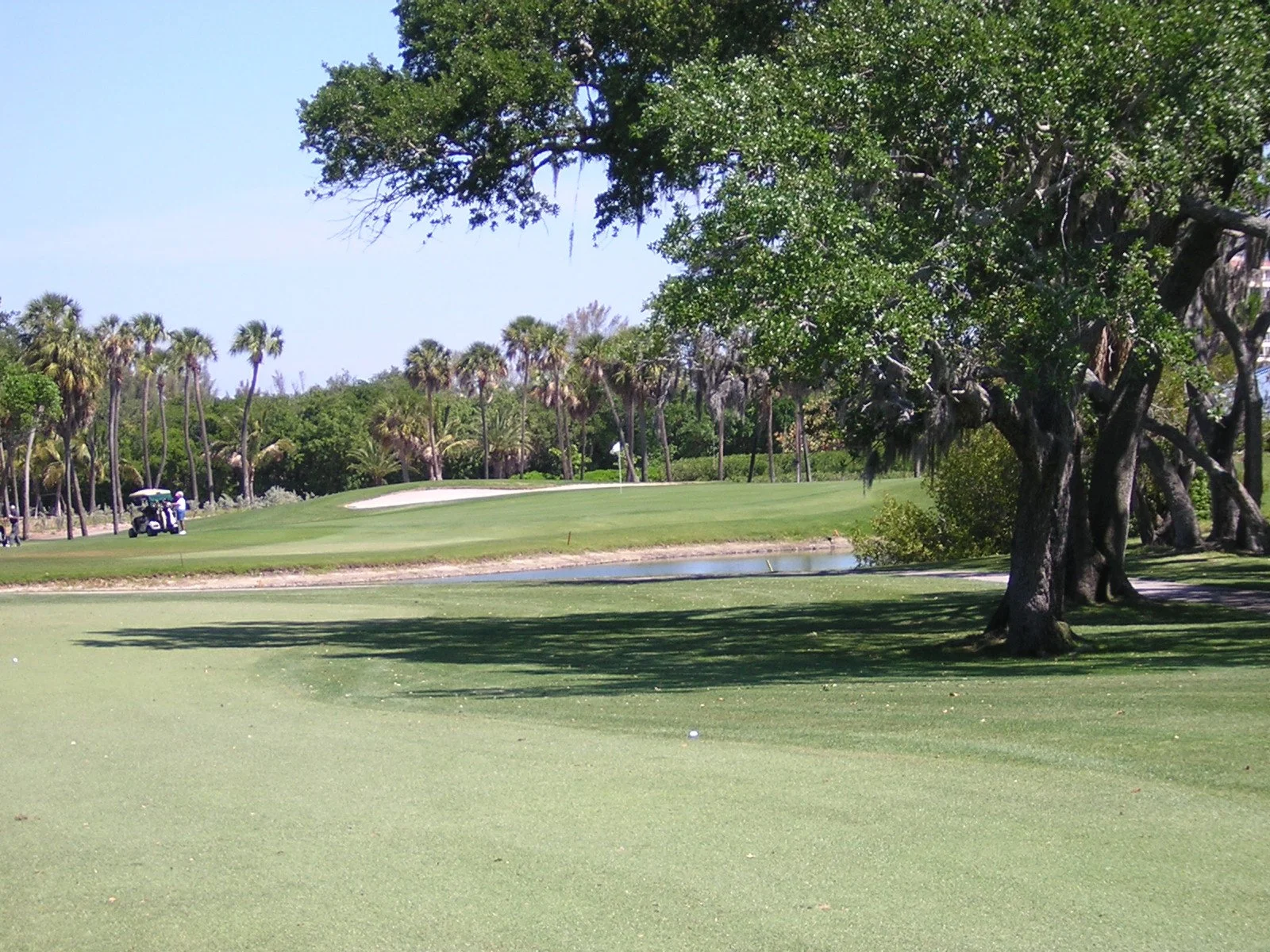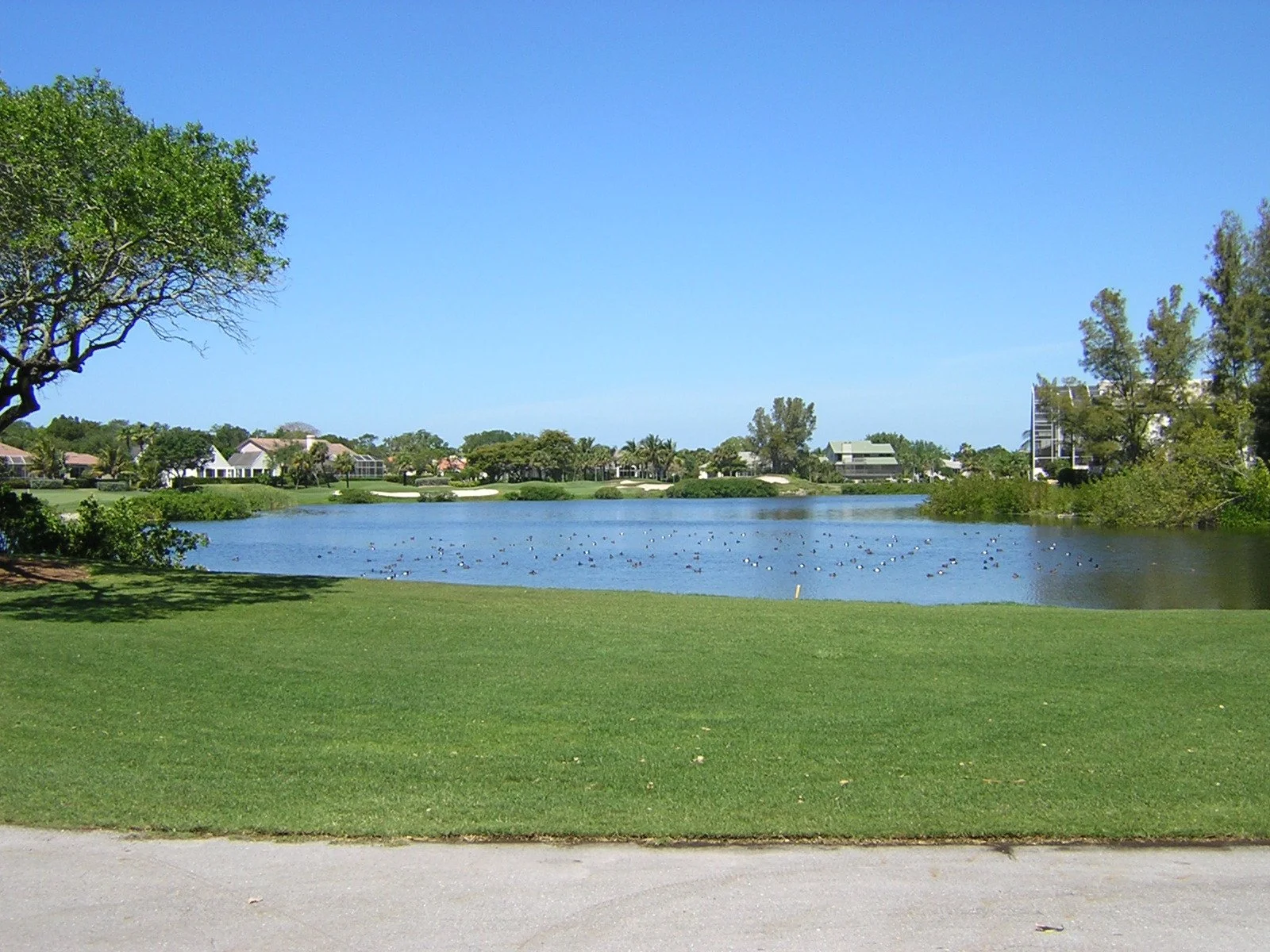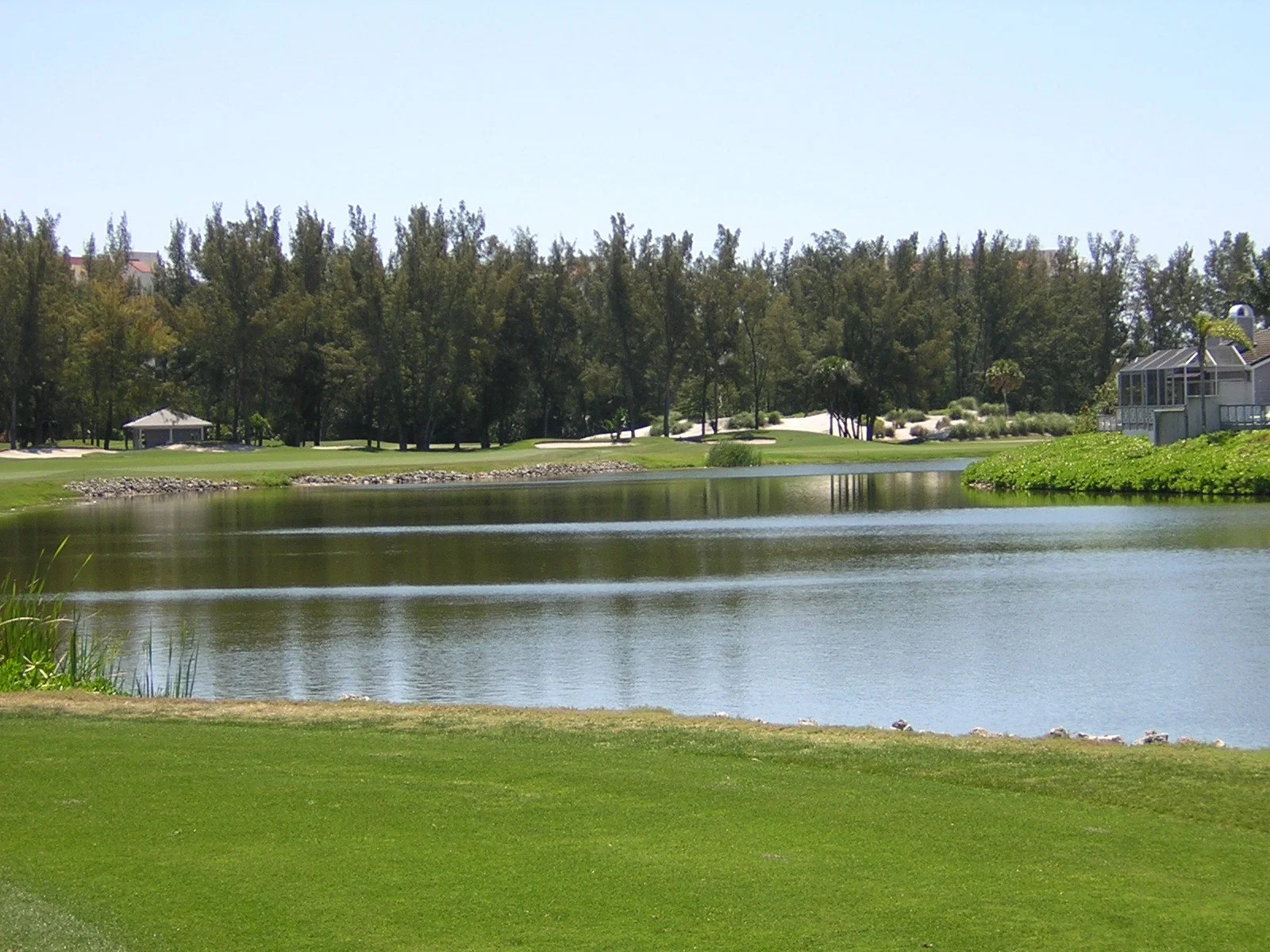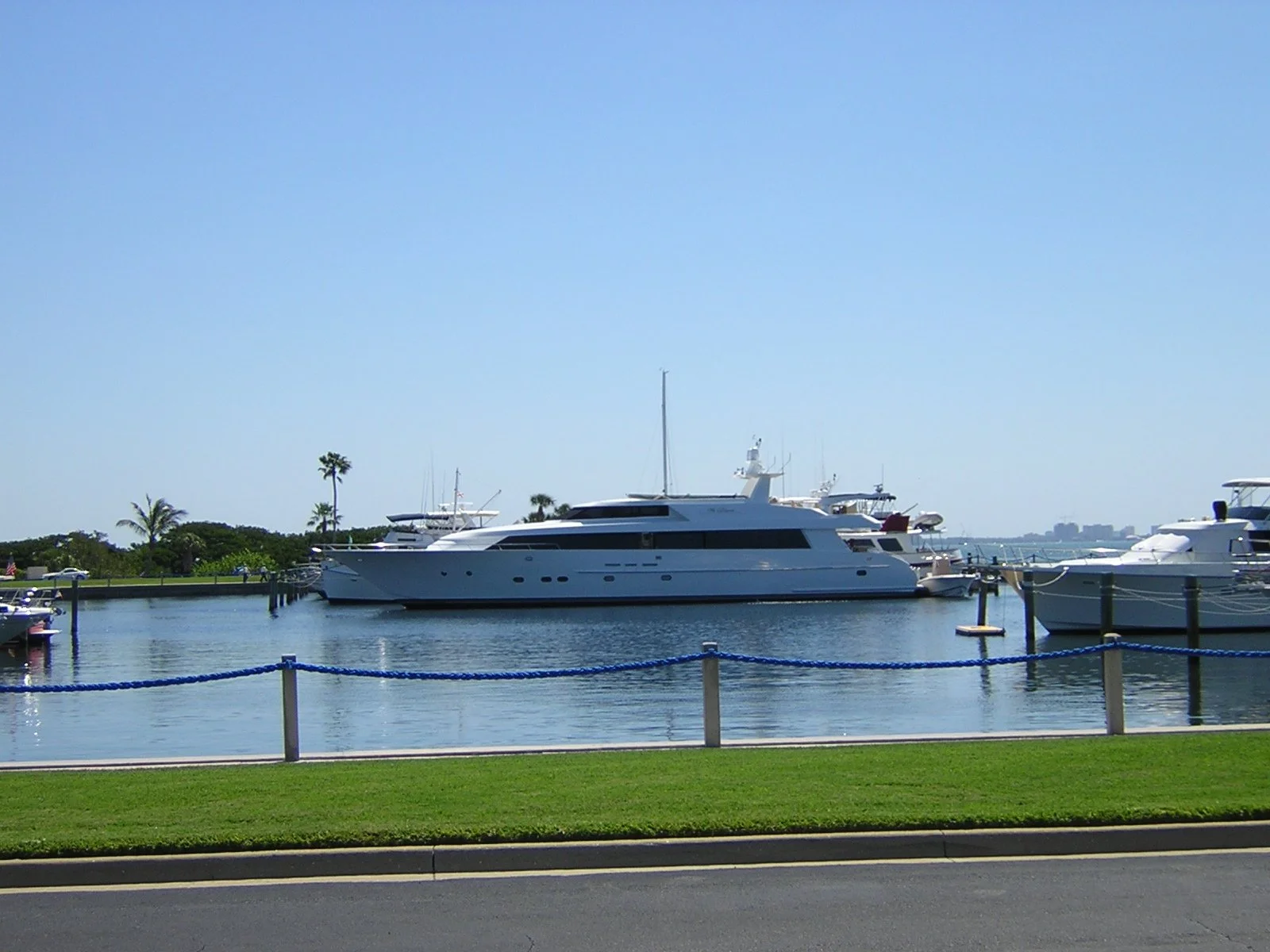LONGBOAT KEY CLUB (HARBOURSIDE)
Course Architect: William Byrd, Ron Garl (Blue redesign, 2005)
Year Opened: 1982
Location: Longboat Key, Florida
Slope: Red/White 134, White/Blue 132, Blue/Red 139
Rating: Red/White 72.5, White/Blue 72.8, Blue/Red 72.8
Par: 72
Yardages: Red/White (6,768), White/Blue (6,827), Blue/Red (6,743)
RED WHITE BLUE HERON
Hole-by-Hole: 1 - Par 4 379 Yds 1 - Par 4 390 Yds 1 - Par 4 379 Yds
2 - Par 4 400 Yds 2 - Par 4 430 Yds 2 - Par 4 395 Yds
3 - Par 3 175 Yds 3 - Par 5 535 Yds 3 - Par 3 148 Yds
4 - Par 5 518 Yds 4 - Par 4 387 Yds 4 - Par 4 418 Yds
5 - Par 4 339 Yds 5 - Par 3 160 Yds 5 - Par 5 605 Yds
6 - Par 3 185 Yds 6 - Par 4 380 Yds 6 - Par 4 345 Yds
7 - Par 4 400 Yds 7 - Par 3 184 Yds 7 - Par 3 170 Yds
8 - Par 5 562 Yds 8 - Par 5 523 Yds 8 - Par 4 419 Yds
9 - Par 4 384 Yds 9 - Par 4 437 Yds 9 - Par 5 522 Yds
Par 36 3,342 Yds Par 36 3,426 Yds Par 36 3,401 Yds
Awards Won: Rated 4 stars by Travel + Leisure Golf Magazine (2005).
Website: longboatkeyclub.com
HISTORY: Part of a 45-hole facility at Longboat Key Club and Resort, the Harbourside Course features 27 tree-lined holes bordering Sarasota Bay. The Red and White nines wind up and back, south of the clubhouse, while the recently-renamed Blue Heron nine is spread out on the north end.
The Blue Heron holes, formerly called the Blue nine, recently underwent a $2 million facelift under the guidance of architect Ron Garl.
A graduate of the University of Florida, Garl has designed and remodeled courses all around the world, including gems in the "Sunshine State" such as TPC at Prestancia, Golden Ocala Golf & Equestrian Club and Grenelefe Resort.
Garl added bunkers, sand dunes and chipping areas to the Blue Heron nine and rebuilt the putting surfaces, creating an exciting and challenging group of holes.
The Red and White nines will also be renamed and redesigned by Garl, as he adds large waste bunkers into the design to bring the course up to today's standards with the improvement of technology.
REVIEW: The Red nine features tight, tree-lined fairways with water on seven of the holes. The opening hole is a straightaway par four, requiring only a fairway metal off the tee. A short iron remains to a green flanked by a pair of large bunkers. A perfect start to get into the flow of the round.
With water down the entire right side, the second hole requires an accurate tee ball to have any chance at making par. The second bends slightly to the left and, after a successful tee shot, just a medium to short iron remains. The green slopes from back to front, so play below the hole.
The next hole is the first par three, stretching to 175 yards -- the third longest of the six one-shotters. The long, narrow green slopes back to front and is flanked on both sides by tall stands of trees.
The par-five fourth is a straightaway 518-yarder that can be reached in two. However, be wary of the out of bounds and trees right and water left off the tee. Sand around the green could be tricky to recover from, especially with a front flag.
The narrow fairway on the short, straightaway fifth requires just a long iron to set up a little wedge to the undulating green. Trees once again flank the fairway, while a large waste bunker stands short and right of the green.
Heading back towards the clubhouse, the sixth is the longest of the par threes at Longboat Key. With sand everywhere, this gem quite intimidating. When the wind is up, this could be one bear of a hole.
With water down the right and sand on the left, the par-four seventh is as demanding as it gets. Long and straight off the tee will result in a medium iron to a green protected on the left by a deep trap.
The No. 1 handicap hole on the Red is the par-five eighth, stretching a modest 562 yards from the blue tees. Water runs down the entire right side and crosses short of the green. Favor the left side off the tee, though a pair of traps guard the landing area. One of the few holes not surrounded by trees, the eighth is affected by the wind, thus making it a true three-shot hole as it bends to the right. The green is wide-open, except for the bunker left, which is well off the surface. This should be one of your best shots at birdie.
The closing hole on the Red is a beaute. Water all along the left side with sand down the right and a long waste bunker left. Pinpoint accuracy is required off the tee, as the fairway is pinched in the landing area. The putting surface slopes from back to front with two large traps on either side. With a northerly wind and a back-left flag, this hole could be a round-breaker.
The longest of the three nines, the White is laid out similar to the Red, with six holes featuring water. Once again, there are tight, tree-lined fairways on the way out and water-guarded holes coming home.
The first hole on the White is the easiest on the course, straightaway with a wide fairway. After a successful tee shot, just a wedge will remain to a slightly-elevated green with a bunker on the right. Really no reason that birdie can't be made.
In contrast, the second is long and tight. Stretching 430 yards, this par four features tough bunkering down the right side of the landing area and tightens as you reach the putting surface. Any shot missed to the right of the green will be gobbled up by a dense thicket of mangrove.
The third hole is listed as the most difficult on the White nine, as it reaches 535 yards from the back buttons. Although it plays straightaway, the hole is tight and tree-lined with sand short and left of the green. Making par will not be easy.
The dogleg-right fourth is a gem. Sand down the left side guards the landing area, while water looms right, the side you must favor to have an open shot to the green. The putting surface is slightly elevated with a large bunker fronting the promised land. Any shot long of the green will be wet, as water wraps around the back of the hole.
The fifth is a straight-forward par three of 184 yards. Club selection is key, as sand guards the entire back section of the green, not to mention the right portion as well. The putting surface is quite flat, but a back-right pin can make this one devilish hole.
The only option of play on the par-four sixth is straight down the middle. Trees guard the right and water left on this difficult hole. Keep the driver in the bag and use your fairway metal or long iron to set up a medium to short iron to a small green protected by sand on three sides. Tough hole to make birdie, let alone a par.
Although ranked as the eighth easiest hole on the nine, the par-three seventh is as tough as it gets. With the wind blowing in your face, club selection here is quite difficult, ranging anywhere from three-iron to seven-iron. Trees right, and sand left and right with a sloping green, make this hole anything but easy.
The key on the snake-like, par-five eighth is length and accuracy. Water encompasses the entire left side of the hole, while sand guards most of the right. Your opening shot must hug the right side, thus flirting with the trees by the tee. Going for the green in two is certainly a gamble with the water and numerous traps fronting the surface. The smart play would be out to the right with your layup shot and then a little wedge to the green. The putting surface is quite slick from back to front, so play below the hole for a birdie attempt.
Running along side the marina, the ninth is a solid finishing hole, stretching 437 yards. A pair of long bunkers guard the left side of the fairway, while the right side is open. However, you must favor the left, as tall trees will partially block your approach to the green. The fun really begins with your second shot, which must cover a small body of water fronting the green. The putting surface is also no bargain, as the two-tiered, split-level green would indicate. Making par here will be quite a task.
The most picturesque of the group is the Blue Heron nine. Following its facelift, the Blue features some outstanding views with water coming into play on six holes.
The first is a sharp dogleg-right par four, just 379 yards in length. Accuracy is key, as the fairway must be hit, avoiding the large traps in the landing zone. A short iron awaits to a fairly small green that slopes gently from back to front.
Talk about a sharp dogleg, the second is almost 90 degrees from the tee box. Once again, not a long hole, but plenty of carry over a lake to a generous fairway. The slightly-elevated green is protected nicely by numerous traps, ready to swallow up any errant approach. A good hole to make par, just don't be too greedy.
The par-three third is the shortest of all of the one-shotters at Longboat Key, just 148 yards in length. The defense is the fronting traps and the sloping green, which cants from back to front. Play below the hole to leave the best shot at birdie.
Another dogleg to the right, the fourth plays over water off the tee and all along the right side to the green. One of the more difficult holes out there, especially when the wind is up, the fourth could be a back-breaker. To make matters worse, sand protects the left side of the fairway, so par is a unique commodity.
The best of the Blue and Longboat Key is the par-five fifth, measuring a whopping 605 yards from the tips with water down the entire right side. Start off with a tee ball over water on this dogleg right. Then your layup shot must split water right and tall sand dunes left. Finally, your approach to the green must be pinpoint, as water and wind will lead your shot astray to the left to right-sloping peninsula green.
A reprieve of sort is the sixth, at just 345 yards from the back tees. Straightaway with sand dunes left and numerous bunkers around the green, this hole can be had, especially when attacking with a wedge.
One of the prettiest holes at Longboat Key is the par-three seventh, as it offers an outstanding view of Sarasota Bay in the background. Bunkering short-left and right-front make this hole quite the challenge, especially with the wind blowing in. As little as a seven-iron or as much as a three-iron can make this one tough hole.
Another picturesque setting, the eighth bends to the right with the Bay along the left. This par four is tough and is usually wind-affected, making par a difficult score.
The final hole on the Blue Heron nine has it all. Sand, water, length and difficulty. This par five starts out straight with down the right side and OB and Sarasota Bay left. The layup area narrows with water and sand to the right while the hole takes a significant turn to the right towards the green. Numerous traps guard the putting surface, which is open to the elements.
FINAL WORD: Although certainly not long by today's standards, Longboat Key Club's Harbourside Course has all you need and more. First up, 27 holes of solid golf featuring mature trees, beautiful vistas, sculptured bunkering and let's not forget -- a challenge. The White and Red nines are similar. Tight, tree-lined holes with plenty of H2O. The Blue Heron nine is spectacular, not to mention very difficult and visually intimidating. All three courses are quite playable with numerous tee boxes from the beginner to the advanced.
The resort has many "Stay and Play" packages to choose from, is just minutes away from Sarasota and St. Petersburg and an hour from Tampa International Airport. Longboat Key Club and Resort features over 200 guest rooms and suites, each with private balconies. Only a stone's throw from the Gulf of Mexico, Longboat Key is a quality family destination, especially with its
year-round "Kids Klub," spa and fitness center. Depending upon the time of day, golf prices range from $60-80 per round from May through December.
The bottom line: Longboat Key Club is an outstanding golf destination. Another key ingredient is its location to the nightlife and attractions of Sarasota and the fun and games of St. Pete and Tampa. This is one you shouldn't miss.
